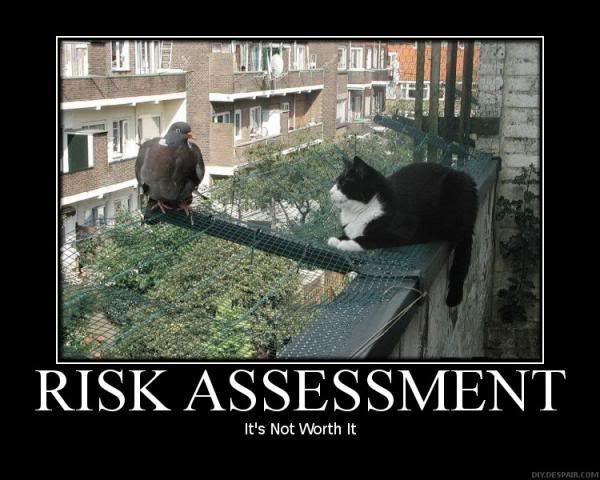Mark Thoma at Economist’s View presents an article on the hiring of Bear Stearns’ chief risk officer to "help supervise banks."
 While it could be argued that Michael Alix understands the complex issues involved in risk management, it seems to me there are many individuals who warned about the credit crisis who similarly understand the problems but did not play a major role in creating the mess. – Ilene
While it could be argued that Michael Alix understands the complex issues involved in risk management, it seems to me there are many individuals who warned about the credit crisis who similarly understand the problems but did not play a major role in creating the mess. – Ilene
"Culture of Risk"
This doesn’t inspire much confidence:
You may make a mess, but please don’t try to clean it up by Barbara Kiviat: It’s hard to believe, but people are starting to express outrage over the New York Fed hiring the former chief risk officer of Bear Stearns to help supervise banks. To be fair, I feel like I should acknowledge that it would be practically impossible to clean up this mess without employing some of the people who created it. …
To be fair again, I feel like I should go back and see what, exactly, Michael Alix has been saying these past few years. Just because he was running risk management at Bear Stearns when the company collapsed from a lack of sound risk management doesn’t necessarily mean he was sitting idly by. …
So I did a little rooting around, and found this June 2006 BusinessWeek story about Wall Street’s "culture of risk" for which Alix was interviewed. An excerpt:
Yet for all the risks they’re taking on, banks insist they’re safer than ever. They’ve hired many of the greatest mathematical minds in the world to create impossibly complex risk models… "Right now everything on my screen is flashing red," said Michael Alix… But "that doesn’t make me nervous"… The bank has built such powerful computing systems that Alix can reevaluate every day the risks of thousands of positions across the firm’s trading businesses under various stressful scenarios to be sure the firm doesn’t hold too much of any risky investment at any one time. That type of analysis used to take a week to complete. "The machine works," he says.
This, we now know, didn’t work so well.
It seems that as chairman of the Securities Industry Association’s risk management committee, Alix was also an important part of the effort to convince regulators that investment banks didn’t need to hold nearly as much capital as their commercial bank brethren. Here’s a letter he wrote to the Federal Reserve’s board of governors in August 2003…
This, we now know, didn’t work so well, either.
But my favorite thing I found in my rooting around was Alix’s June 2004 House testimony on the topic of Basel II. One of the reasons investment banks should be allowed to use more leverage, he said, was because of the protective qualities of mark-to-market accounting…
This, we now know, not only didn’t work so well, but is also, we’re told, causing a lot of the problems we’re having.
Look, I don’t envy the position the New York Fed is in. I have the luxury of not having to go out and hire people who 1) deeply understand the operations of finance firms, and 2) are willing to take a job in the public sector. At the same time, I’m guessing I’m not the only person a little squinty-eyed over this one. …
Reminder: The 48-hour delay box is incorrect. This is our free, educational section — all materials immediately available. Also, visit the backup site for the archives, blogroll and comments for the Favorites section.



